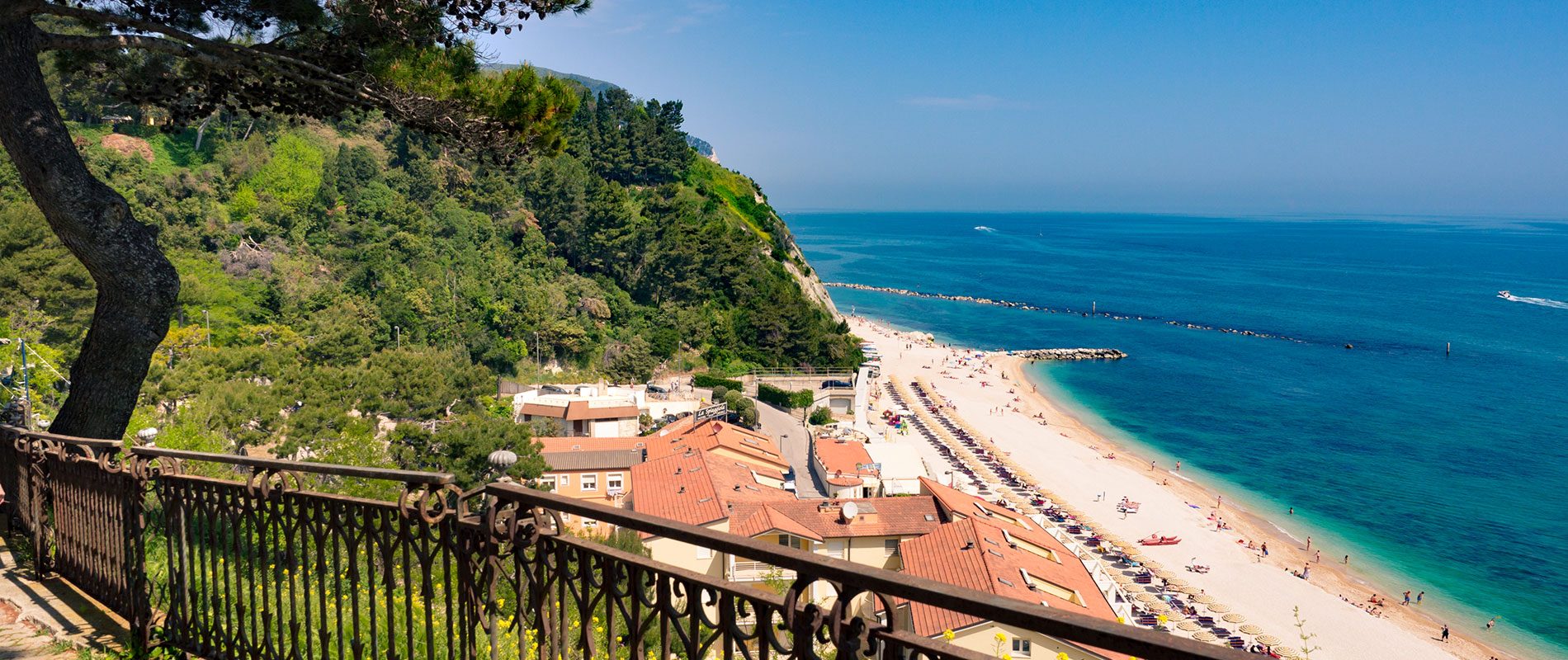
Numana
Water as far as the eye can see, a fishing village and the mysterious stories of a Picenian queen: this is Numana, perched on a cliff, a unique place to enjoy a holiday dedicated to sea and culture.
Numana, awarded the “Bandiera Blu d’Europa” (the Blue Flag of Europe) for its quality beaches, is one of the pearls of the Conero Natural Park (5800 hectares), characterized by a very rare stretch of high coastline that overlooks the sea and the hills with a perfect mix of clear water, cultivated fields, ancient villages and Mediterranean vegetation.
The town is divided between the Upper zone, populated with small houses and winding streets that are its picturesque soul, and the Lower zone where you can find a small marina and the beach. The Costarella steps are the natural link between these two areas – the ancient pathway was used by fishermen since the beginning of time.
Here, the coast has two faces: to the north, towards Pesaro, the foothills of Monte Conero (527 metres) drop down into the Adriatic, concealing small beaches between the inlets. Among these we note the Spiaggiola, Numana’s true city beach. Instead, to the south, there is a large beach with small pebbles where there is a collection of amenity-filled beaches, restaurants and nightlife.
If from the public gardens that border the main square you can limitlessly enjoy the blue of the sea, from the small square of the Torre, just on the opposite side, you can explore the entire waterfront from the south and the hills that make up the background.
On summer nights, the silhouette of the entrance arch of the Torre resembles a modern stargate beyond which the glimmer of the stars mixes with the shore lights seamlessly.
Numana’s history is ancient: in the Neolithic period, Numana had already housed human settlements, according to findings by the state centralized archeological museum. In this small museum, objects from what is said to be the Queen’s Picene tomb (in the archeological area known as I Pini of Sirolo) are guests of honor. Luxurious outfits, with over a thousand brooches and buckles, two intact chariots and one very rare belt loom, leaves you to believe that the women found buried were princesses.
The Numanese tradition is also tied to the ancient Byzantine crucifix kept in the Sanctuary located in the main square. It’s a mysterious object that legend claims came from the Holy Land and therefore constitutes a work of considerable historical and artistic value.


